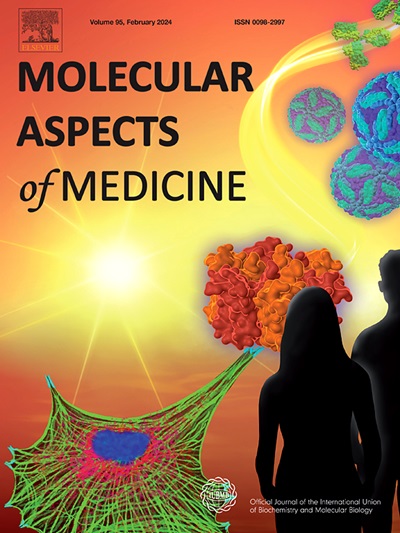Duration of systemic antifungal therapy for patients with invasive fungal diseases: A reassessment
IF 10.3
2区 医学
Q1 BIOCHEMISTRY & MOLECULAR BIOLOGY
引用次数: 0
Abstract
Invasive fungal diseases are associated with significant morbidity and mortality, especially among immunocompromised patients, and often prompt for rapid and aggressive treatment aiming cure. Due to the expanding magnitude of patients burdened by chronic immunosuppression and affected by fungal diseases, the diversity of clinical settings has risen. This often results in prolonged therapy (induction, consolidation and maintenance) associated with potentially severe side effects, and clinicians face the challenging decisions of when and how to stop anti-fungal therapy. Adequate duration of therapy is poorly defined, hampered by the lack of dedicated trials to the question, the heterogeneity of cases (type of fungal pathogen, localization of infection, underlying host conditions) and various confounding factors that may influence the clinical response (e.g. persistence vs recovery of immunosuppression, impact of surgery). In this review, we aim to evaluate the existing data underlying the guidelines and recommendations of treatment duration for the most frequent invasive fungal diseases (cryptococcal meningitis, Pneumocystis pneumonia, invasive aspergillosis, invasive candidiasis and mucormycosis), as well as specific localizations of deep-seated diseases (osteo-articular or central nervous system diseases and endocarditis) and emerging considerations and strategies.
侵袭性真菌疾病患者全身抗真菌治疗的持续时间:再评估
侵袭性真菌疾病与显著的发病率和死亡率相关,特别是在免疫功能低下的患者中,通常需要快速和积极的治疗以治愈。由于受慢性免疫抑制和真菌疾病影响的患者数量不断增加,临床环境的多样性也在增加。这通常导致治疗时间延长(诱导、巩固和维持),并伴有潜在的严重副作用,临床医生面临着何时以及如何停止抗真菌治疗的挑战性决定。由于缺乏针对该问题的专门试验、病例的异质性(真菌病原体的类型、感染的定位、潜在的宿主条件)以及可能影响临床反应的各种混杂因素(例如免疫抑制的持续与恢复、手术的影响),对适当的治疗持续时间的定义不明确。在这篇综述中,我们旨在评估最常见的侵袭性真菌疾病(隐球菌性脑膜炎、肺囊虫性肺炎、侵袭性曲霉病、侵袭性念珠菌病和毛霉病)的治疗时间指南和建议的现有数据,以及深层疾病(骨关节或中枢神经系统疾病和心内膜炎)的特定定位以及新出现的考虑和策略。
本文章由计算机程序翻译,如有差异,请以英文原文为准。
求助全文
约1分钟内获得全文
求助全文
来源期刊

Molecular Aspects of Medicine
医学-生化与分子生物学
CiteScore
18.20
自引率
0.00%
发文量
85
审稿时长
55 days
期刊介绍:
Molecular Aspects of Medicine is a review journal that serves as an official publication of the International Union of Biochemistry and Molecular Biology. It caters to physicians and biomedical scientists and aims to bridge the gap between these two fields. The journal encourages practicing clinical scientists to contribute by providing extended reviews on the molecular aspects of a specific medical field. These articles are written in a way that appeals to both doctors who may struggle with basic science and basic scientists who may have limited awareness of clinical practice issues. The journal covers a wide range of medical topics to showcase the molecular insights gained from basic science and highlight the challenging problems that medicine presents to the scientific community.
 求助内容:
求助内容: 应助结果提醒方式:
应助结果提醒方式:


